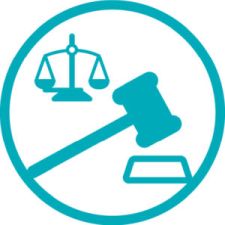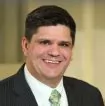Evidence Relating to Third Party Chips Better Be Good When It's TV Time at the Federal Circuit:
The admissibility of third-party source code as a business record under FRE 803(6)
In patent infringement cases involving consumer electronics and the like, the accused instrumentality oftentimes includes components the accused infringer obtained from third-party suppliers. To prove infringement, the patent owner may need discovery from the third party, such as source code, and that discovery would in turn be relied upon by the patent owner's testifying expert. In a recent precedential opinion, the Federal Circuit exposed a range of evidentiary challenges the patent owner faces when trying to rely on third party discovery to prove its infringement case, thereby providing litigants and the bar with valuable lessons. In this opinion, Wi-LAN Inc. v Sharp Electronics Corporation and Vizio, Inc., the Federal Circuit affirmed a decision by Chief Judge Stark of the District of Delaware granting summary judgment of non-infringement to the accused infringer and excluded consideration of source code from a third party chip maker as inadmissible hearsay. Without the excluded source code, the patent owner, Wi-LAN, could not prove infringement against Sharp and Vizio as a matter of law.
Background
In 2015, Plaintiff Wi-LAN Inc. sued Defendants Sharp Electronics Corporation and Vizio, Inc., accusing Defendants' digital televisions of infringing two patents. One of those patents claimed methods for displaying interlaced video on a non-interlaced monitor. The functionality implicated in Wi-LAN's infringement accusations was purportedly performed by chips in the televisions known as System-on-Chips (SoCs) that were supplied by third-party chip makers.
In support of its infringement case, Wi-LAN relied on a printout of Register Transfer Level (RTL) source code it obtained from third party chip makers, together with declarations from employees of the chip makers. Those declarations stated that source code in the printout "provide[d] the implementation of the deinterlacing process for digital video data in a specified list of chips" and that there were "no material differences" between the version of code in the printout and the code contained in any version of chips used since 2009. Wi-LAN needed the source code to prove infringement of the claimed methods, and its technical expert relied on the source code excerpts and declarations in his infringement opinions.
In summary judgment briefing, Sharp and Vizio objected to the admissibility of the source code printouts and the supporting declarations and moved to preclude Wi-LAN's experts' reliance on them. Sharp and Vizio argued that the source code printout was untrustworthy because it contained inconsistent dates in its metadata, copyright, and revision histories and displayed added commentary (e.g., annotations) on the printed excerpts. They also pointed to Wi-LAN's failure to obtain change logs, file comparisons, or other evidence of code revisions that might clarify the inconsistencies in the code as well as Wi-LAN's failure to depose the declarants. Further, Sharp and Vizio pointed out that during Wi-LAN's effort to obtain the source code, the third party chip makers had originally claimed that they could not produce one version of source code for all SoCs at issue in the case, casting further doubt on the credibility of both the source code printout and the declarations.
The district court held the source code printout and Wi-LAN's expert's reliance on same to be inadmissible. Without the excluded evidence, Wi-LAN did not have sufficient evidence to prove infringement, and the district court granted summary judgment on non-infringement in favor of Sharp and Vizio. Wi-Lan appealed to the Federal Circuit.
Federal Circuit Appeal

On appeal, Wi-LAN challenged the district court's rulings, presenting several theories as to why the district court had erred and why the source code printout was admissible. First, Wi-LAN argued that the source code printout constituted a business records admissible under the business records exception to hearsay, Fed. R. Evid. 803(6). Second, Wi-LAN argued that the source code printout was admissible under Fed. R. Evid. 901(b)(4). Third, Wi-LAN argued that the source code printout should have been admitted under Fed. R. Evid. 703. The Federal Circuit rejected all three arguments and affirmed the district court's decision to exclude the source code printout and any expert testimony that relied on it. The Federal Circuit's opinion is instructive on issues to consider when seeking to introduce or challenge source code and other evidence obtained from non-parties to a patent litigation.
Fed. R. Evid. 803(6) custodial declarants must be made available to testify at trial
Fed. R. Evid. 803(6), a hearsay exception, permits a "record" that meets the following five requirements to be admitted into evidence:
(A) the record was made at or near the time by-or from information transmitted by-someone with knowledge;
(B) the record was kept in the course of a regularly conducted activity of a business, organization, occupation, or calling, whether or not for profit;
(C) making the record was a regular practice of that activity;
(D) all of these conditions are shown by the testimony of the custodian or another qualified witness, or by a certification that complies with Rule 902(11) or (12) or with a statute permitting certification; and
(E) the opponent does not show that the source of information or the method or circumstance of preparation indicate a lack of trustworthiness.
The Federal Circuit first addressed the means by which a business record is introduced into evidence. It stated that "[t]he business records exception allows admission of records of regularly conducted activity through the testimony of a custodian or other qualified witness." Wi-Lan argued that it met the requirements through the declarations of the chip makers, but the Federal Circuit disagreed. "We agree with the district court that the declarations could not be used to authenticate the source code printout on the theory that the declarations were a proxy for trial testimony or themselves admissible as business records." Importantly, the court noted that Wi-LAN had failed to show that the declarants would be available to testify at trial and thus their declarations could not be used a substitute for trial testimony.
Declarations prepared for litigation purposes are not Fed. R. Evid. 803(6) business records
Wi-LAN also argued that it satisfied Fed. R. Evid. 803(6) because the declarations were themselves admissible business records. The Federal Circuit rejected this argument, too, on the grounds that the declarations are not a "record [that] was kept in the course of a regularly conducted activity of business." Instead, the court held that declarations were "created and prepared for purposes of litigation, placing them outside the scope of the exception."
Circumstances evidencing a lack of trustworthiness of business records leads to exclusion
Wi-LAN's final argument for why Fed. R. Evid. 803(6) was satisfied focused on Third Circuit law that applied a more flexible test of admissibility, one that allows the court to accept business records into evidence without live testimony of the custodian or another qualified witness. After questioning the approach, the Federal Circuit held that it would not make a difference because Sharp and Vizio had demonstrated that the source code printout lacked trustworthiness.
Similarly, the Federal Circuit rejected Wi-LAN's argument that the district court should have admitted the source code printout under Fed. R. Evid. 901(b)(4). Rule 901(b)(4) permits a record to be admitted into evidence if "[t]he appearance, contents, substance, internal patterns, or other distinctive characteristics of the item, taken together with all the circumstances" "support a finding that the item is what the proponent claims it is." The court again pointed to the lack of trustworthiness of the tendered evidence.
Fed. R. Evid. 703 (Bases of an Expert's Opinion Testimony) is unavailable as a "backdoor" to introduce inadmissible evidence
In the alternative to its argument that the printout itself was admissible evidence, Wi-LAN argued that the source code printout should have been admitted under Fed. R. Evid. 703. This rules states:
An expert may base an opinion on facts or data in the case that the expert has been made aware of or personally observed. If experts in the particular field would reasonably rely on those kinds of facts or data in forming an opinion on the subject, they need not be admissible for the opinion to be admitted. But if the facts or data would otherwise be inadmissible, the proponent of the opinion may disclose them to the jury only if their probative value in helping the jury evaluate the opinion substantially outweighs their prejudicial effect.
The Federal Circuit noted that "Wi-LAN's argument presents two separate and distinct questions: (1) whether the source code printout was admissible because it was relied on by the expert and (2) whether the expert's testimony relying on the source code was admissible to establish infringement." The court answered both questions in the negative.
As for the first question, the Federal Circuit observed that Fed. R. Evid. 703 "does not make admissible otherwise inadmissible evidence" and that it was the trial court's gatekeeping duty to guard against the rule serving as a "backdoor" to admitting inadmissible hearsay by way of an expert. The Federal Circuit then said that, "Wi-LAN attempts to do exactly what is impermissible under Rule 703 by using its expert as a substitute for a fact witness to circumvent the rules of evidence to admit otherwise inadmissible evidence."
On the second question, the Federal Circuit held the Wi-LAN failed to meet the requirement of the Fed. R. Civ. P. 703 that "experts in the particular field would reasonably rely on those kinds of facts or data in forming an opinion on the subject." While acknowledging that experts typically rely on source code in reaching conclusions about infringement, the court said that "Wi-LAN has not made a showing that source code experts reasonably rely on unauthenticated source code printouts."
In short, the Federal Circuit concluded that the district court had not abused its discretion in rejecting Wi-LAN's theory of admissibility under Fed. R. Civ. P. 703.
It is within a district court's discretion to deny belated discovery efforts to address evidentiary problems
Wi-LAN's final argument relating to the source code was to challenge the district court's refusal to give it additional time to obtain an admissible version of the source code. The Federal Circuit disagreed, holding that "Wi-LAN had ample time to obtain the source code and to find custodial witnesses to authenticate the source code over the course of discovery but failed to do so."
Key Takeaways
The Federal Court's opinion in Wi-LAN Inc. v. Sharp Electronics Corporation and Vizio, Inc. provides important guidance relating to the admissibility of third-party evidence needed to prove infringement:
- When relying on source code or other business record evidence under Fed. R. Evid. 803(6), be sure to lay a proper foundation for the introduction of the record into evidence, either through a deposition or declaration of a qualified witness. If done through a declaration, the declaration must provide that the witness is available to testify at trial.
- Because Fed. R. Evid. 703 (Bases of an Expert's Opinion Testimony) is not a "backdoor" to introduce inadmissible information, the expert report relying on such information should explain why experts in the field would reasonably rely on such information in forming an opinion on the subject.
- Finally, don't put off collecting and producing third party evidence until the end of discovery. Otherwise, you risk forfeiting the opportunity to obtain and rely on the evidence.
The content of this article is intended to provide a general guide to the subject matter. Specialist advice should be sought about your specific circumstances.


